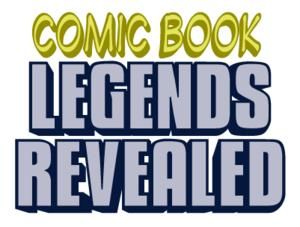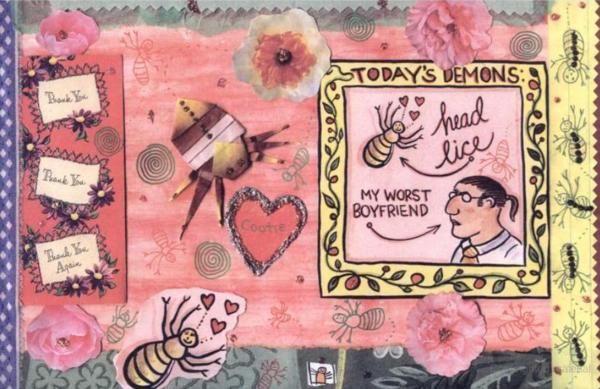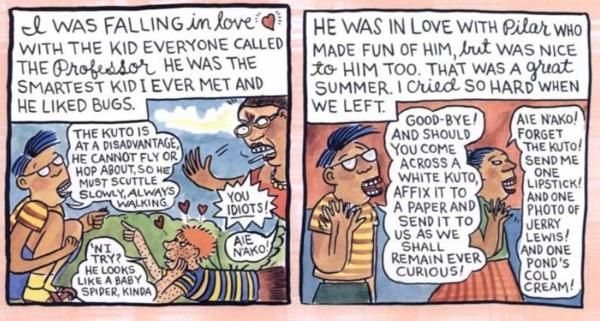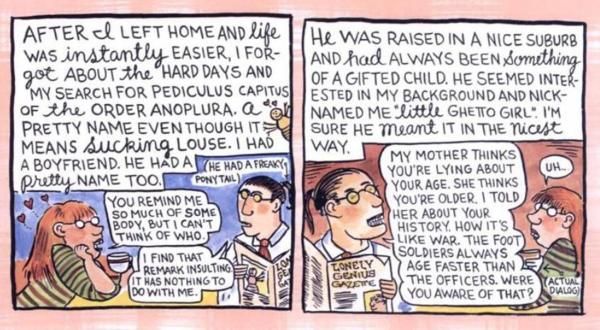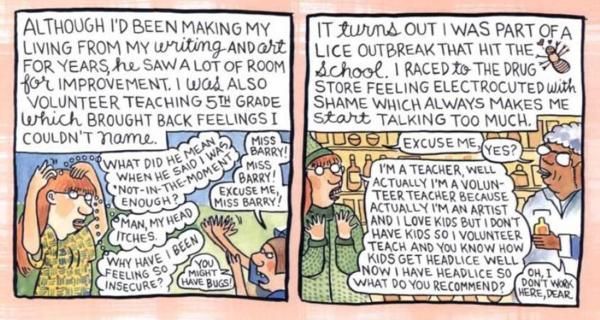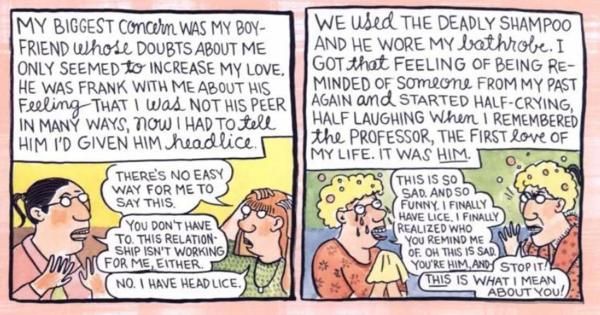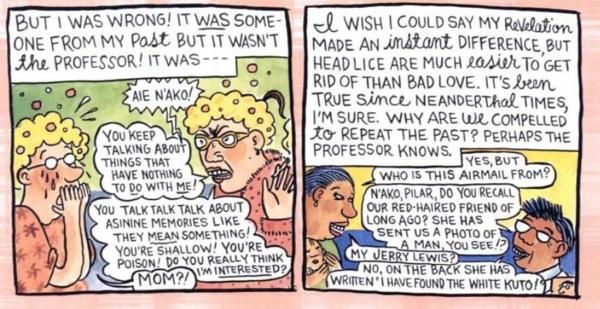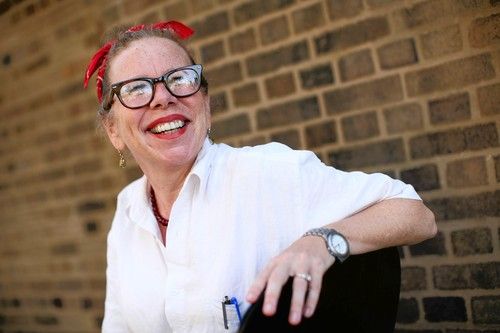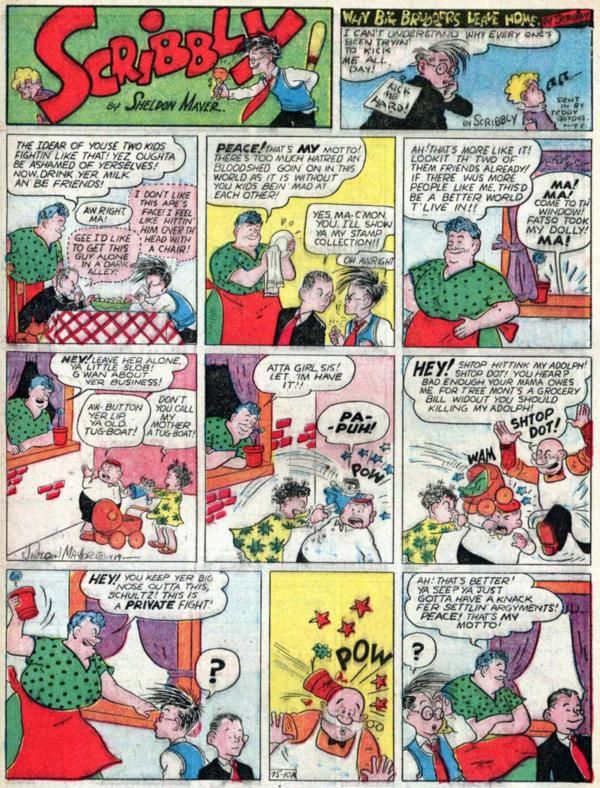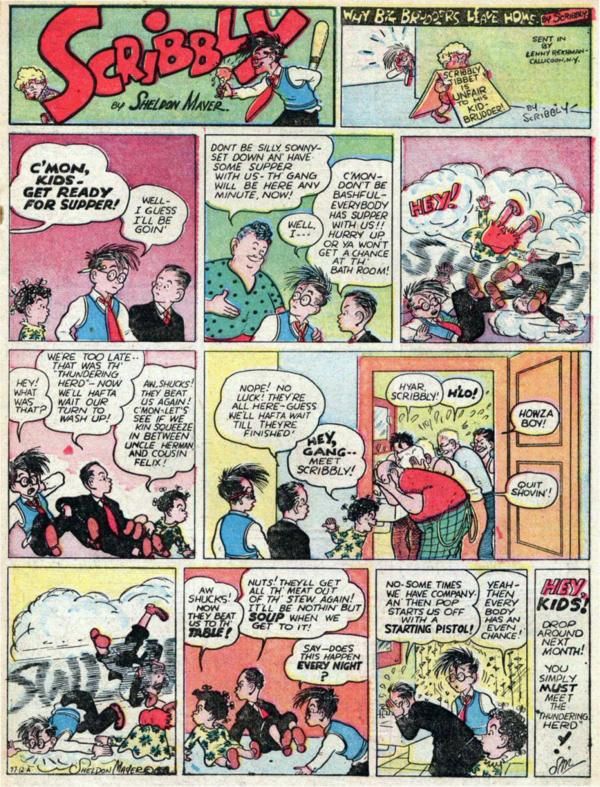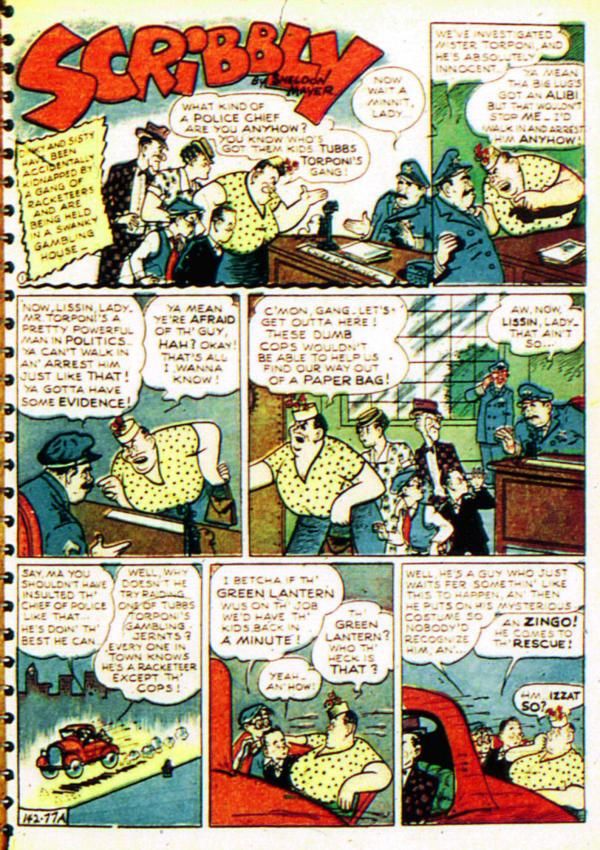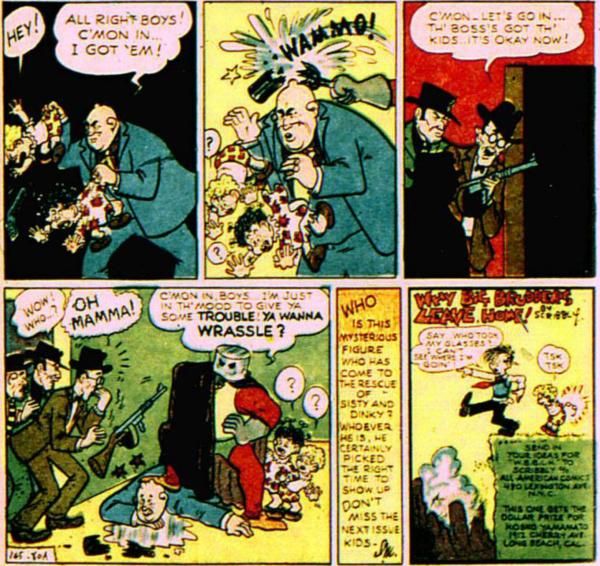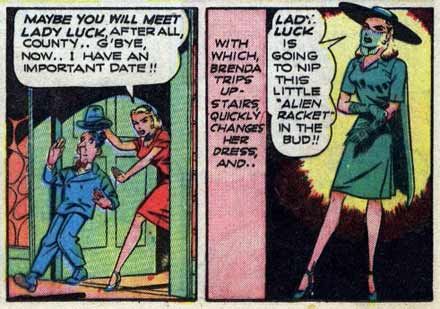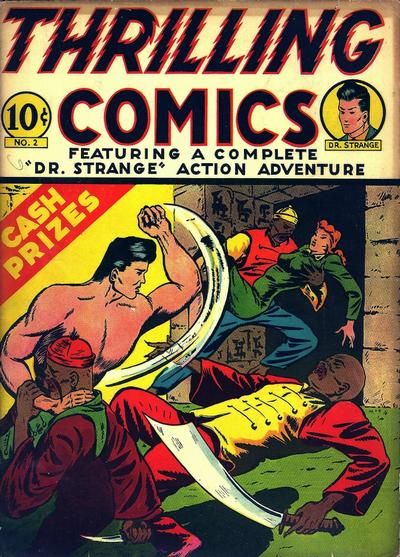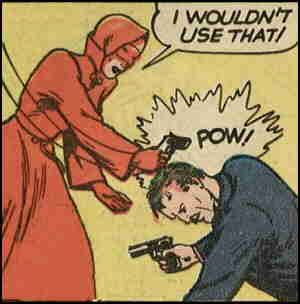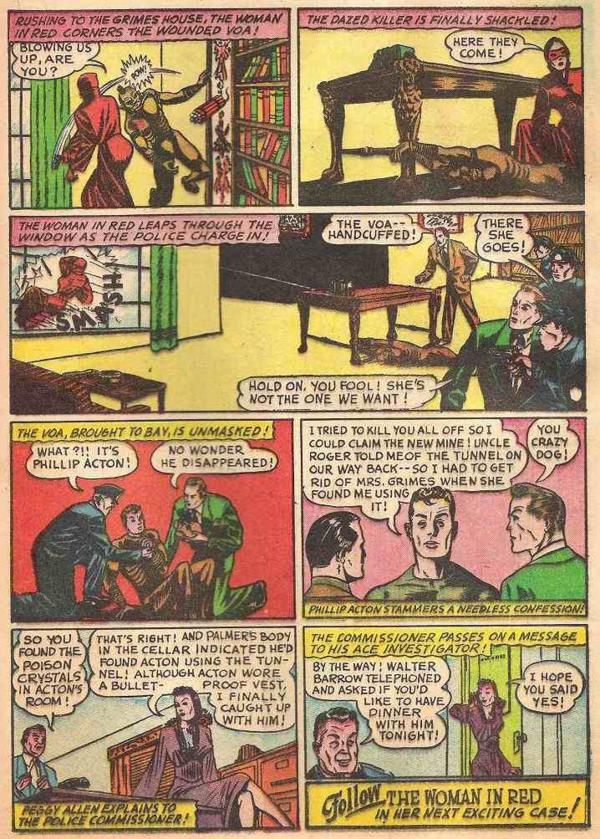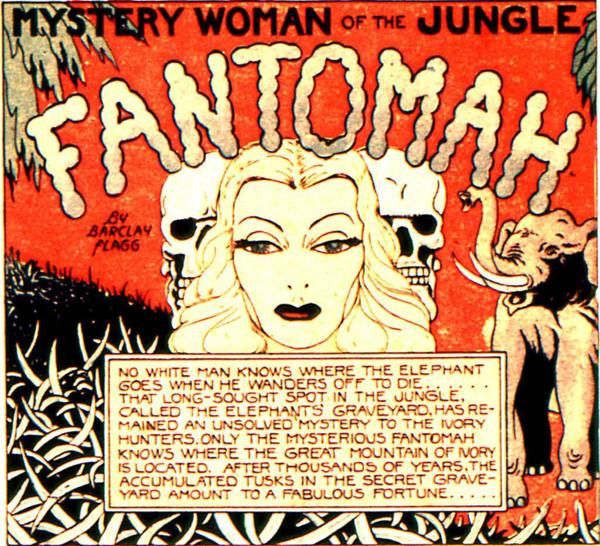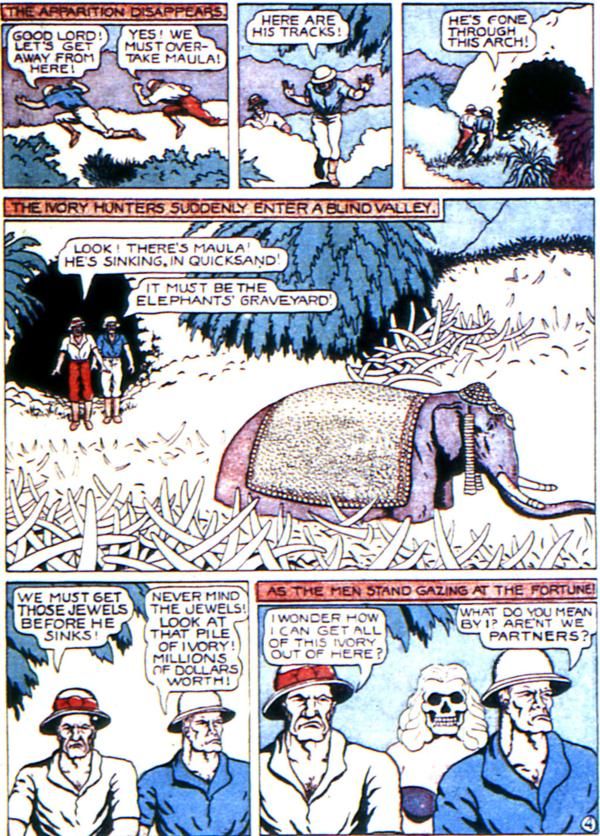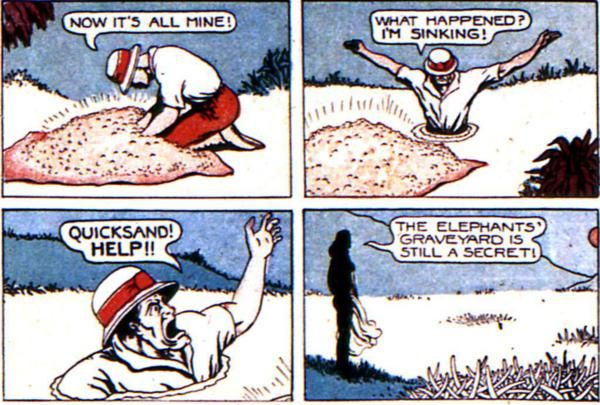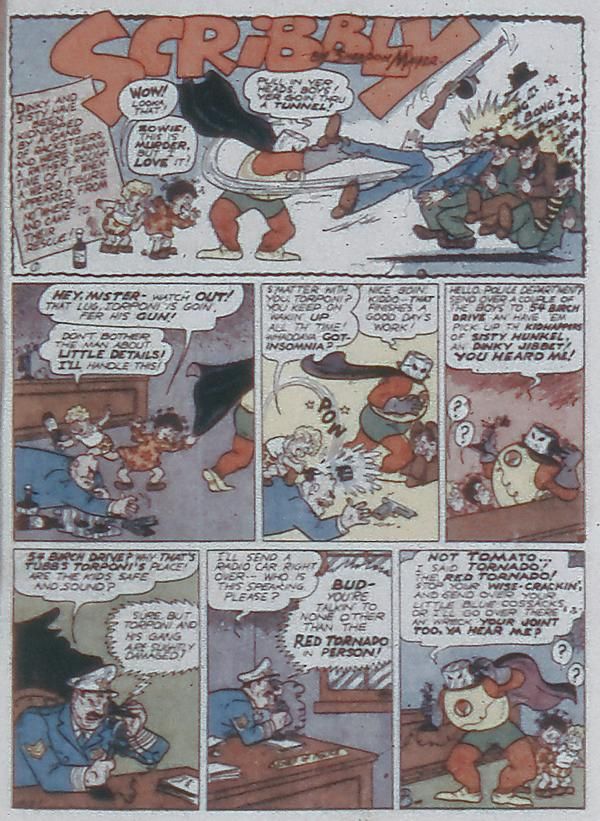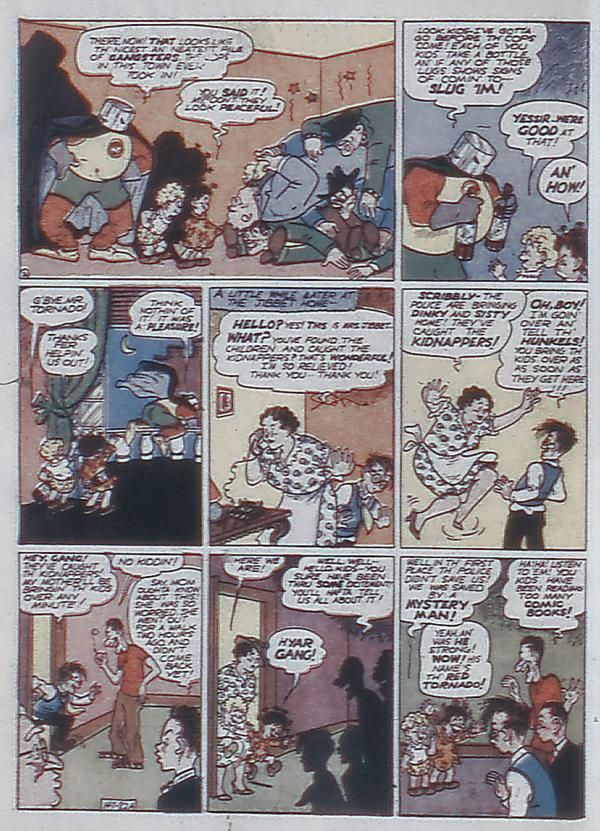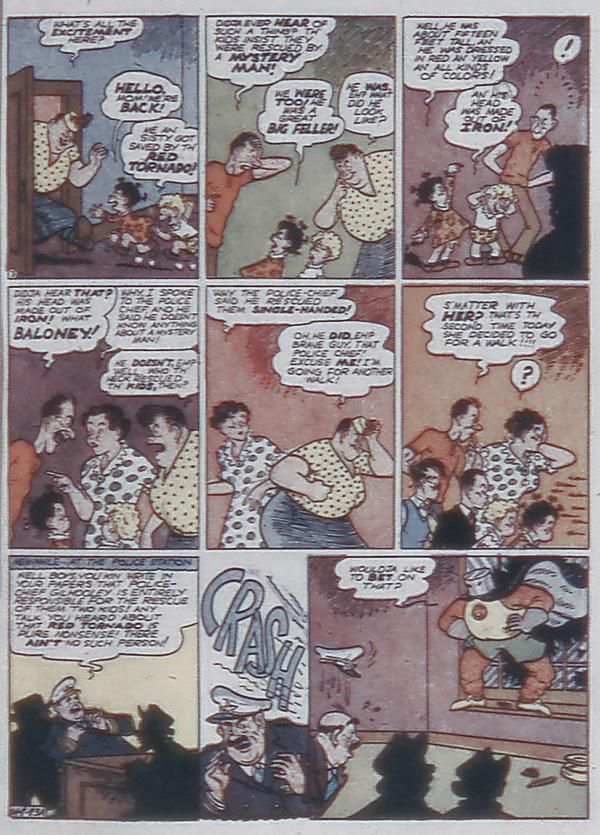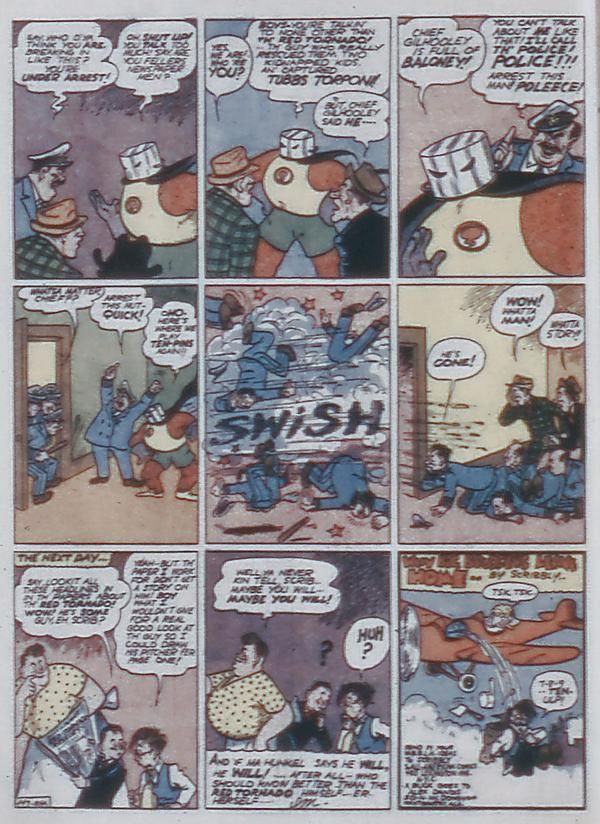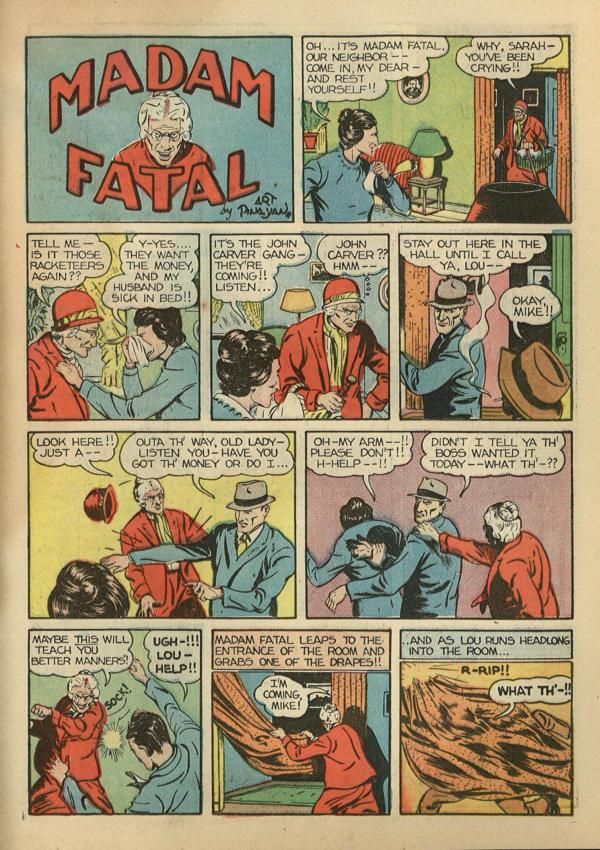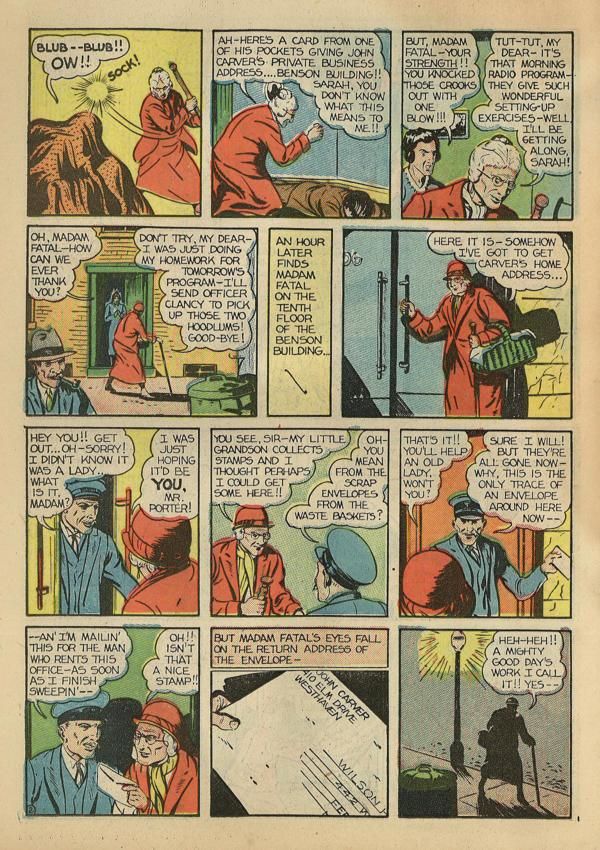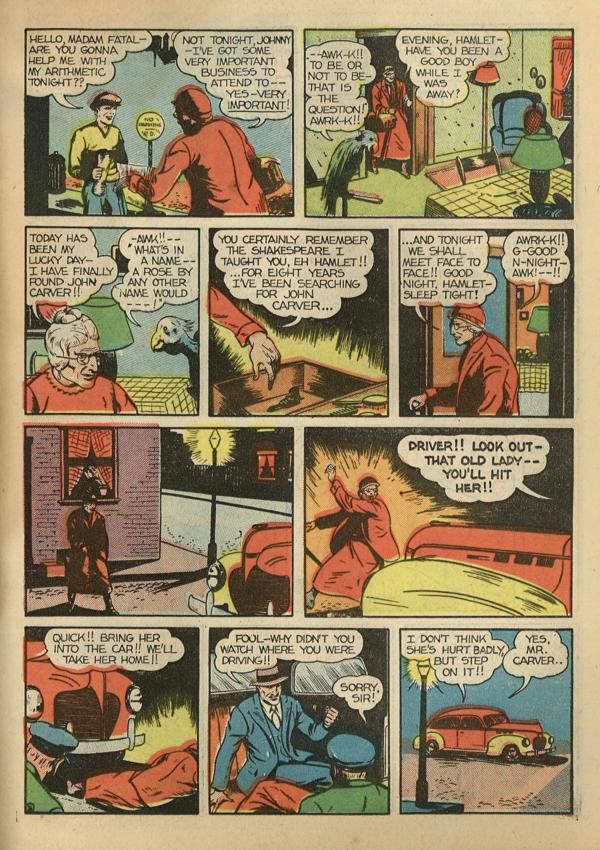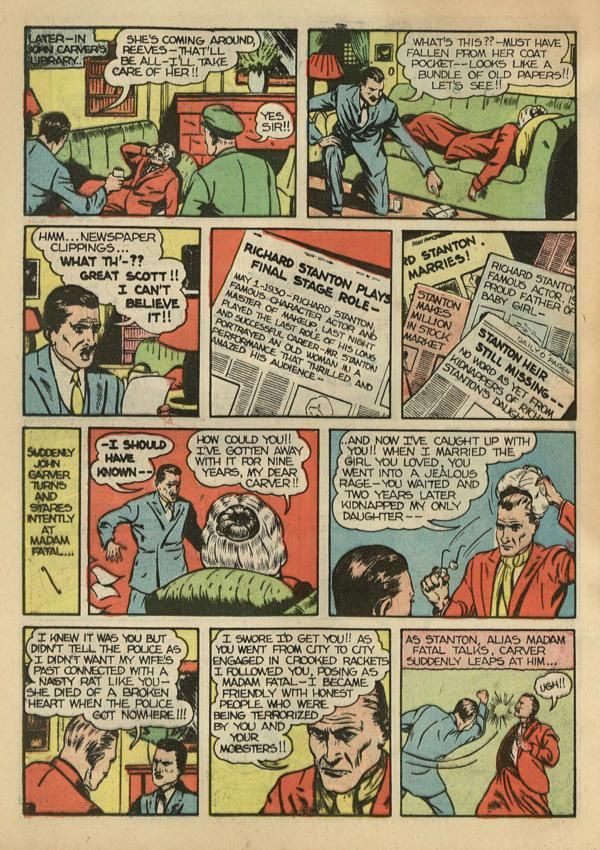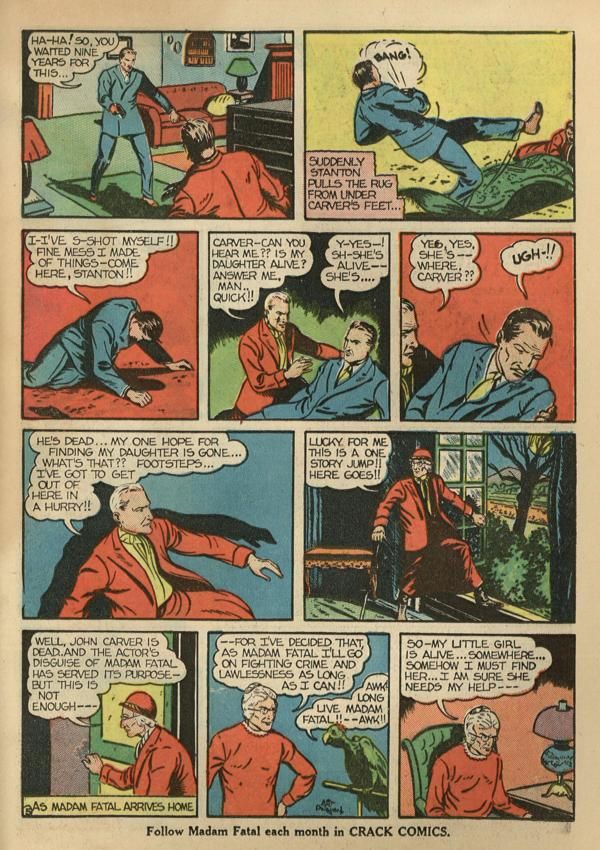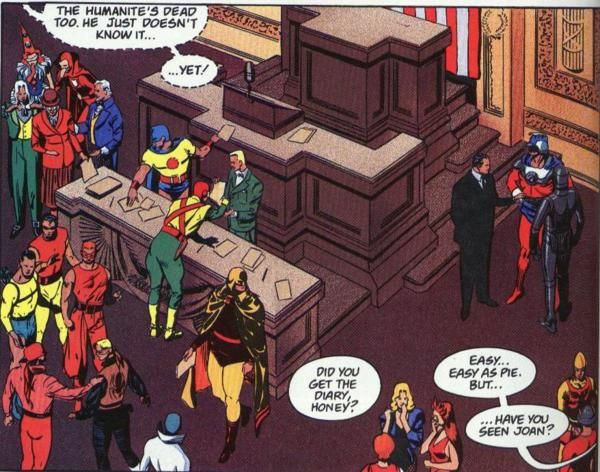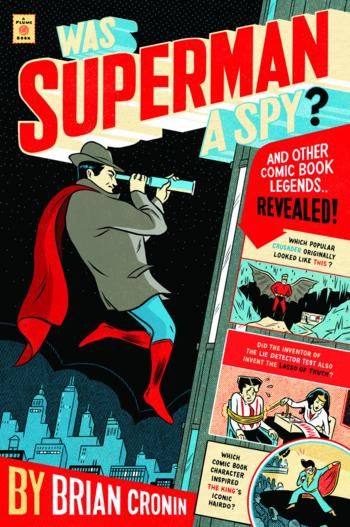Welcome to the two-hundred and forty-second in a series of examinations of comic book legends and whether they are true or false. Click here for an archive of the previous two hundred and forty-one.
Comic Book Legends Revealed is part of the larger Legends Revealed series, where I look into legends about the worlds of entertainment and sports, which you can check out here, at legendsrevealed.com. I'd especially recommend you check out this installment of Novel Legends Revealed to see which series of novels inspired the invention of the taser (and even the name of the weapon)!
Let's begin!
COMIC LEGEND: The boyfriend in Lynda Barry's popular story "Head Lice and My Worst Boyfriend" is now a famous radio personality.
STATUS: True
The great cartoonist Lynda Barry had a regular comic strip on Salon.com that she later put together to form her excellent and wildly successful 2002 release, One! Hundred! Demons!...
The concept of the series was to do a twist on the Japanese zen painting exercise called “One Hundred Demons,” where you paint your "demons" in an effort to get them out of your system. In this case, Barry turns her demons into funny, engaging and heartfelt comic stories.
Probably the most popular story from the book was "Head Lice and my Worst Boyfriend," which was even featured in another book featuring different stories about heartbreak.
The basic gist of the story is that Barry first recalls a childhood trip to the Philippines, where she was told about head lice (she never had any lice as a child so she didn't know anything about them) from a boy she had a crush on and how lice in the United States was different from those in the Philippines. He asked her to send him "white kuto"...
This leads into the following tale of her "worst boyfriend"....
So...that boyfriend?
None other than the host of Public Radio International's This American Life, Ira Glass...
Yep, Barry (who is 54 now) dated Glass (who is 50) back in the late 1980s/early 1990s.
Glass actually moved to Chicago to be with her, and it is in Chicago that he got started at NPR, contributing features on All Things Considered and co-hosting the show The Wild Room.
In a feature on Glass by Michael Miner in the Chicago Reader in 1998, a lot of the details of his relationship with Barry were put out there in the open...
"When that article came out in the Tribune and I saw my name in there, and Gary's [Gary Covino, Glass' co-host on The Wild Room], I got this weird pang in my heart," says Lynda Barry. "It was so weird to see our names in there with this person who changed my belief in human nature. I went out with him. It was the worst thing I ever did. When we broke up he gave me a watch and said I was boring and shallow, and I wasn't enough in the moment for him, and it was over. I had to go around for a year saying, 'Am I boring and shallow and not enough in the moment?'"
It was over, but she and Glass weren't done with each other. She briefly collaborated with Covino and Glass on The Wild Room, and in fact coined the title. Glass recalls that Covino wanted to call the show "Radio Factory," which he and Barry were able to agree was stupid. And when Glass went on The Wild Room to tell the story of why he'd let the Tribune cut his hair, she was the old girlfriend it got cut for. The Tribune had published a vapid Style section photo spread, with Glass as a guy with a ponytail who goes to a fancy Oak Street salon to make "drastic changes." A caption said, "The final cut finds Glass 'ready for Wall Street.' He loves the new look and so do we." Glass said on the air that he went along with this tomfoolery because the ponytail had been favored by an old flame who'd dumped him—and now it was time to stop pining and let her go.
"Get this," says Barry. "He dumps me and does this radio piece about getting his hair cut. That is Ira to a T. You know what he used to call me? He used to call me his 'little ghetto girl!' We were reading the New York Times one morning a couple of weeks in, and he looked at me and said, 'You don't know what the IMF is, do you?'"
But did you really like his ponytail? I asked.
"He could have had a six-inch wart growing out of the middle of his forehead in the beginning, and I'd have thought it was cute."
Glass says, "I was an idiot. I was in the wrong. About the breakup. About the haircut story. About so many things with her. Anything bad she says about me I can confirm."
Pretty interesting stuff!
Thanks to Miner for the article, and Barry and Glass for sharing!
Now for a bit of a break from routine - I have two legends involving the character of Ma Hunkel, but they're too similar to run in separate installments, so I'm going to run both of them this week.
COMIC LEGEND: The Red Tornado was the first female superhero
STATUS: False Enough for a False
Reader Tal wrote in a couple months back to ask if it was true that:
Ma Hunkel was the first female superhero character in comics.
Surprisingly enough, it is very, very close to being true, but ultimately, no, Ma Hunkel was not the first female superhero.
Who IS the first female superhero probably depends on what is your definition of a "superhero." I'll get back to that in a bit.
First, let's talk some Hunkel!
Ma Hunkel has a very interesting comic book pedigree.
In the early days of All-American Publications, they, just like National Publications (makers of Detective Comics and Action Comics), had a wide variety of comic book characters.
One thing they did NOT have, though, was superheroes.
Here's the first issue of their flagship title, All-American Comics...
It was all comedy and standard action heroes in their comics.
One of the characters featured in the comic was a young cartoonist named Scribbly, who starred in his own strip by writer/artist Sheldon Mayer (who was practically a boy cartoonist himself at the time, at 21 years of age).
Well, in All-American Comics #3, Scribbly had an altercation of sorts with another young boy who lived in his building. He chased the boy (whose last name was Hunkel) all the way to the boy's door, where the boy's mother, "Ma" Hunkel, opened the door and solved the problem by "forcing" both boys to sit at the kitchen table and share milk and cookies. Soon enough, the boys were bosom buddies.
Ma appeared in two of the four Scribbly strips that issue.
Here are two of them...
She then remained as a major supporting character in the monthly feature, and all was fine and dandy.
Well, a funny thing happened on the way to the forum, in 1940, in response to the great success that National was having with their superheroes, All-American began to get into the game, and in the Summer of that year, All-American Comics had a new character...
This new hero soon became the clear star of the book.
So much so that, four issues later, in All-American Comics #20, Green Lantern's influence inspired the characters of Scribbly (this was something that All-American Publication characters did often, talk about how great Green Lantern was - see this Comic Book Legend installment, which sure seems more recent than nearly four years ago, for another superhero inspired by Green Lantern, )
And sure enough...
So, for a November 1940 cover date, that's pretty darn early.
That's months before Phantom Lady...
That's a YEAR before Wonder Woman debuted in All-Star Comics #8 (I'm featuring her first cover appearance here)...
And it's likely about on par with Lady Luck (who appeared in the Spirit newspaper feature) (it's hard to tell exactly WHEN comics came out as compared to newspaper release dates)...
However, there are two characters who appear to take the proverbial cake when it comes to determining who the first female superhero was.
And your answer of who the first female superhero was is, as I said above, dependent on your views of what MAKES a superhero a superhero.
The Woman in Red made her first appearance in Standard Comics' Thrilling Comics #2...
Written by Richard Hughes and drawn by George Mandel, she is Trina Robbins' pick for the first female superhero, and she has an excellent case.
Here is an excerpt from one of her earliest appearances, in Thrilling Comics #5...
That's pretty much akin to an early Batman story, right?
But just before you say to her, "There's nobody here, it's just you and me," note that she was beaten into print by Fiction House's Jungle Comics #2, which introduced Fletcher Hanks' Fantomah.
Here's Fantomah's first appearance...
Watch as she takes revenge on a pair of jerk poachers...
Fantomah's got the powers - The Woman in Red has the look.
Who do YOU think is the first "superhero?"
Well, whoever you decide, they both came out before Ma Hunkel's debut as the Red Tornado (and Lady Luck probably came out before Hunkel, as well), so no, Ma Hunkel was not the first female superhero.
Thanks to Tal for the question! And thanks to Don Markstein's excellent Toonopedia for helping sort out the dates of the various characters!
COMIC LEGEND: The Red Tornado was the first cross-dressing superhero
STATUS: False
From All-American Comics #21, here is the first full appearance of the Red Tornado...
As you can see, they make quite a fuss over the fact that everyone thinks Red Tornado is a man.
So that brings up the question - we know she was not the first female superhero, but was Red Tornado the first cross-dressing superhero?
And, again, the answer is, surprisingly enough, false - WAY false.
For you see, in the pages of Quality Comics' Crack Comics #1 earlier that year (which I featured recently in a Comic Book Legends Revealed for their Molly the Model feature) there was a character by the name of....Madam Fatal...
Madam Fatal was not a particularly popular character, and was out of the book within 20 issues or so, and was not seen again until James Robinson and Paul Smith featured him in a cameo in The Golden Age #4 in the early 1990s (as DC Comics purchased all the Quality characters).
Isn't it surprising that no one else has used him at all (besides a couple of offhand remarks by Wildcat about him in JSA issues)?
Again, thanks to Don Markstein's awesome Toonopedia for helping sort out the dates of the characters!
Okay, that's it for this week!
Thanks to the Grand Comic Book Database for this week's covers! And thanks to Brandon Hanvey for the Comic Book Legends Revealed logo!
Feel free (heck, I implore you!) to write in with your suggestions for future installments! My e-mail address is cronb01@aol.com.
As you likely know by now, at the end of April, my book finally came out!
Here is the cover by artist Mickey Duzyj. I think he did a very nice job (click to enlarge)...
If you'd like to order it, you can use the following code if you'd like to send me a bit of a referral fee...
Was Superman a Spy?: And Other Comic Book Legends Revealed
See you all next week!

